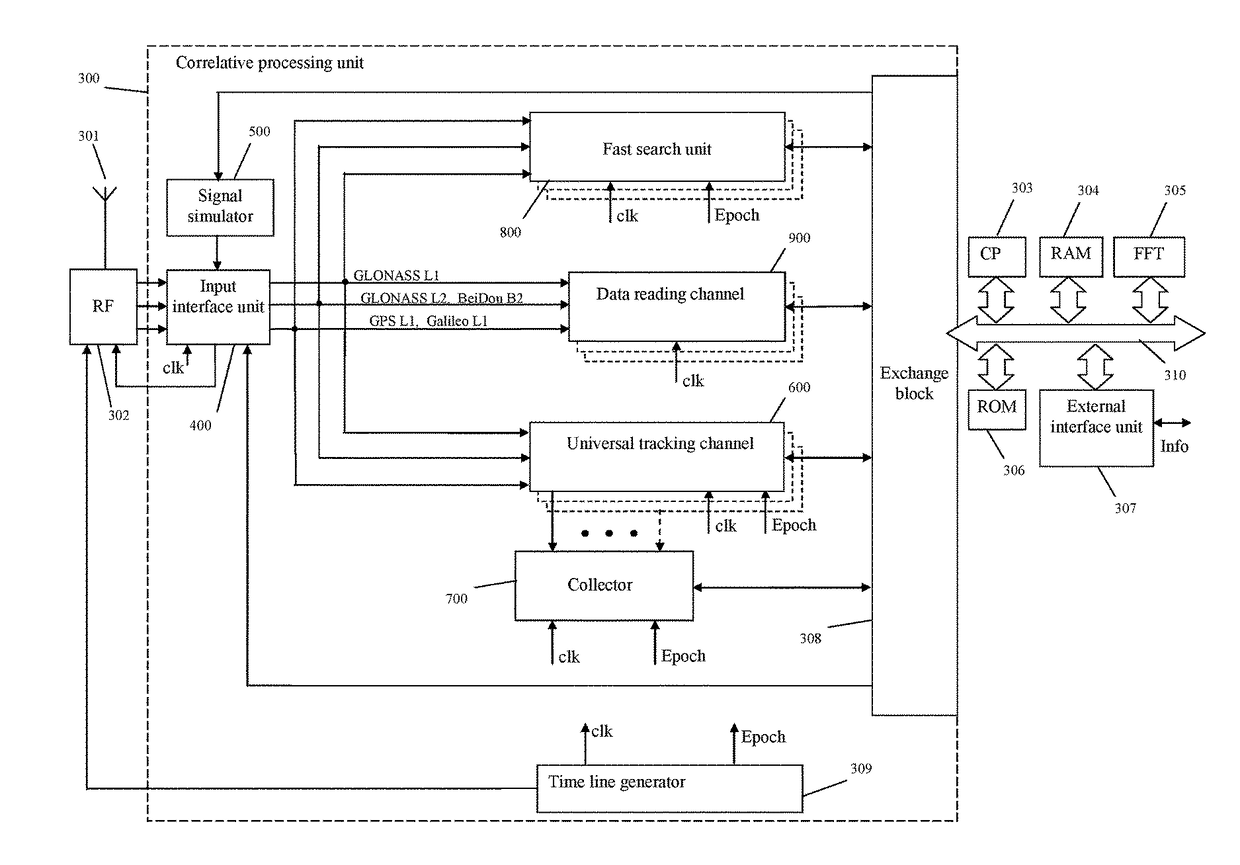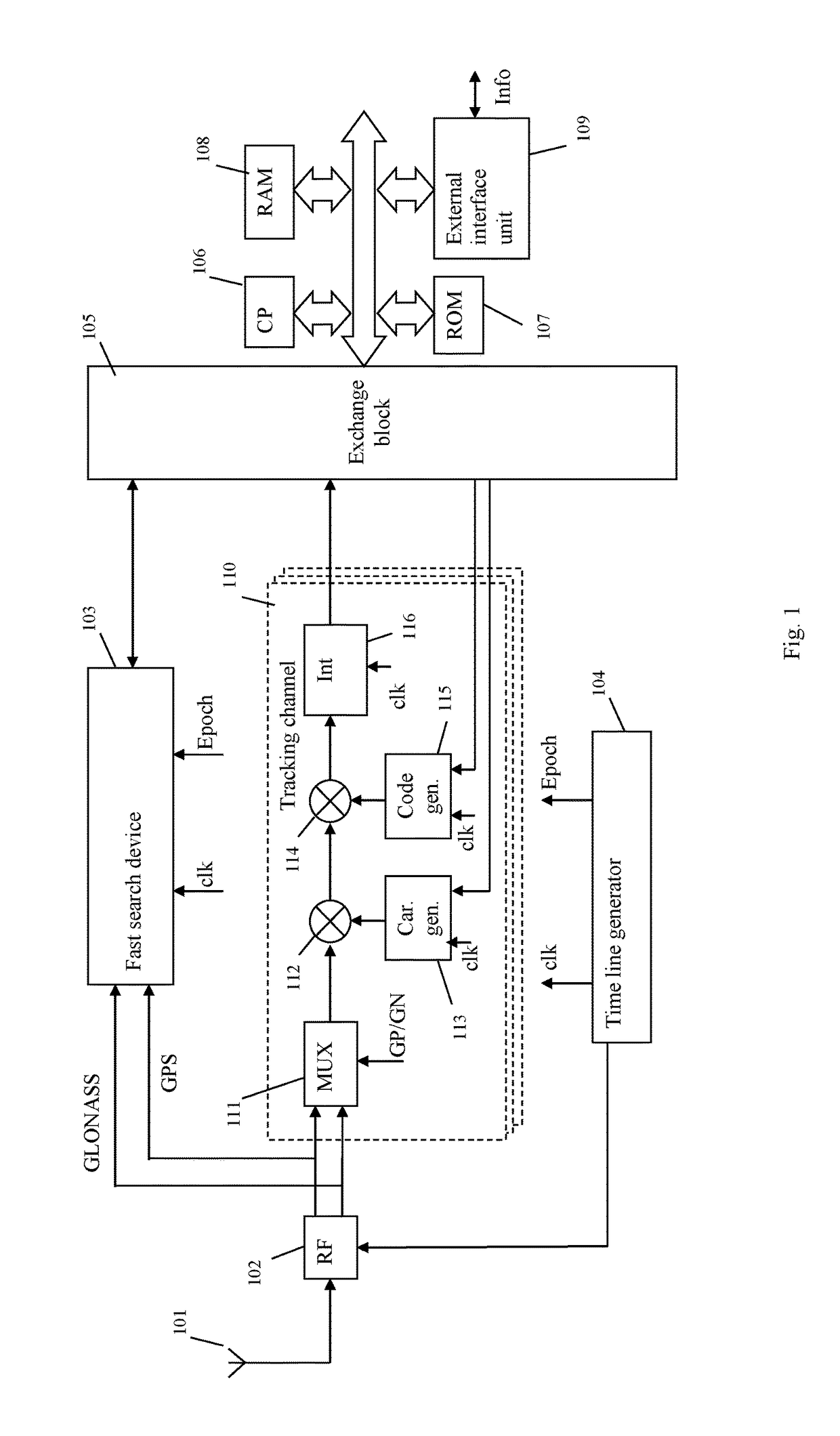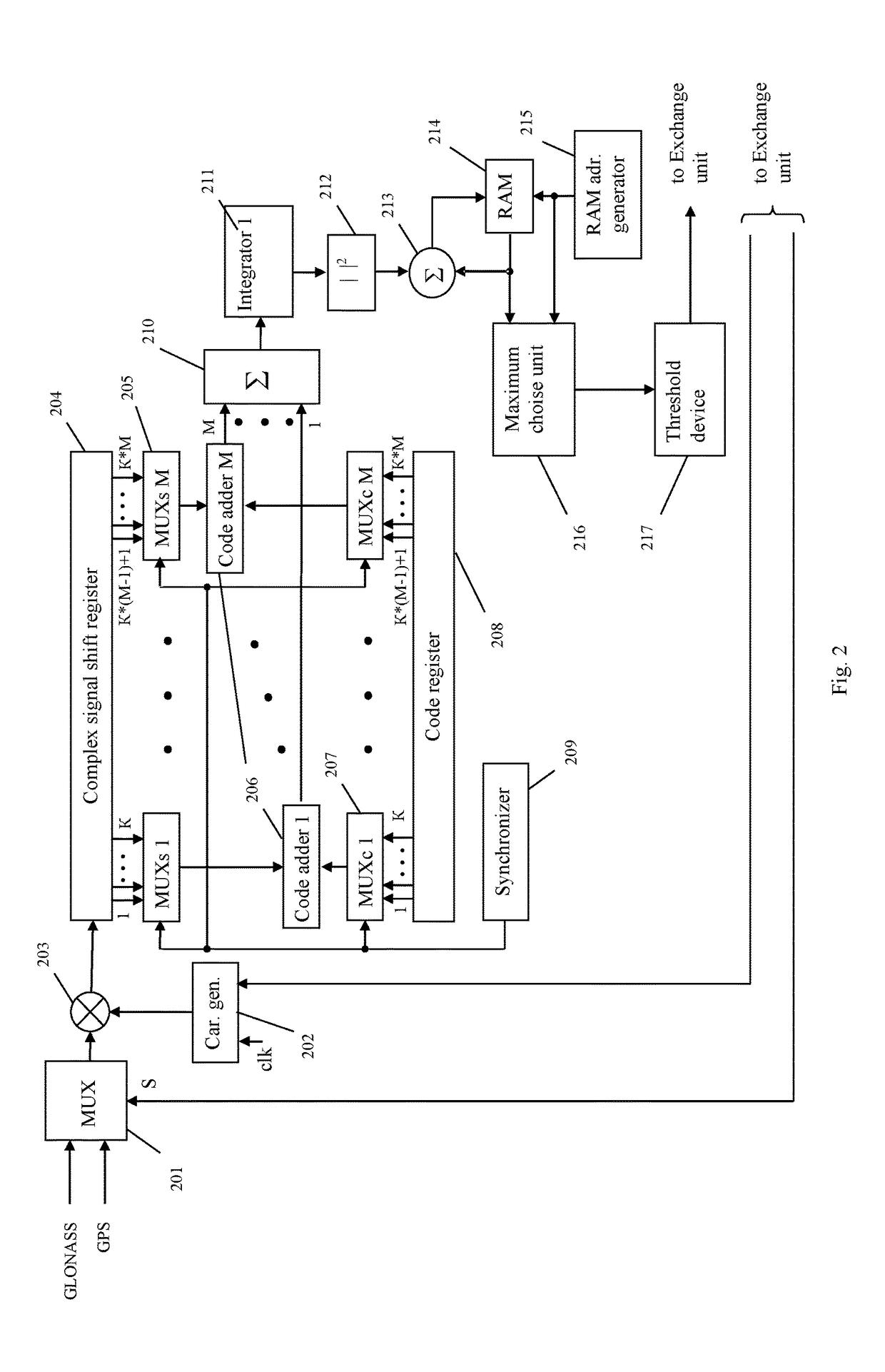Simultaneous signal reception device of different satellite navigation systems
a satellite navigation system and simultaneous signal technology, applied in measurement devices, satellite radio beaconing, instruments, etc., can solve the problems of low acquisition rate of satellite signals, low signal reception rate, and inability to use many famous solutions, so as to increase the volume and reliability of information, and increase positioning speed
- Summary
- Abstract
- Description
- Claims
- Application Information
AI Technical Summary
Benefits of technology
Problems solved by technology
Method used
Image
Examples
Embodiment Construction
[0069]We will consider the applied invention implementation provided in FIGS. 1-10 in more detail.
[0070]The solution fast search problem for all navigation systems, except Galileo, and the subsequent tracking all found satellites is implemented by the correlative processing unit (CPU) 300. CPU functionally represents the multi-channel correlator (MCC) with different types of channels and consists of several fast search units (UFS) 800, a group of the universal tracking channels (UFUC) 600, the collector 700, the input interface unit (UII) 400, the exchange unit (UE) 308, the signal simulator (SS) 500, and the time line generator (TLG) 309. For fast search of Galileo signals a set of the direct data reading channels (CDDR) 900 which are also a CPU part, the central processor (CP) 303 and the unit of the fast Fourier transform (FFT) 305 are used. For descriptive reasons the set of identical parallel channels and their interblock connections are shown in the figures by an example of on...
PUM
 Login to View More
Login to View More Abstract
Description
Claims
Application Information
 Login to View More
Login to View More - R&D
- Intellectual Property
- Life Sciences
- Materials
- Tech Scout
- Unparalleled Data Quality
- Higher Quality Content
- 60% Fewer Hallucinations
Browse by: Latest US Patents, China's latest patents, Technical Efficacy Thesaurus, Application Domain, Technology Topic, Popular Technical Reports.
© 2025 PatSnap. All rights reserved.Legal|Privacy policy|Modern Slavery Act Transparency Statement|Sitemap|About US| Contact US: help@patsnap.com



